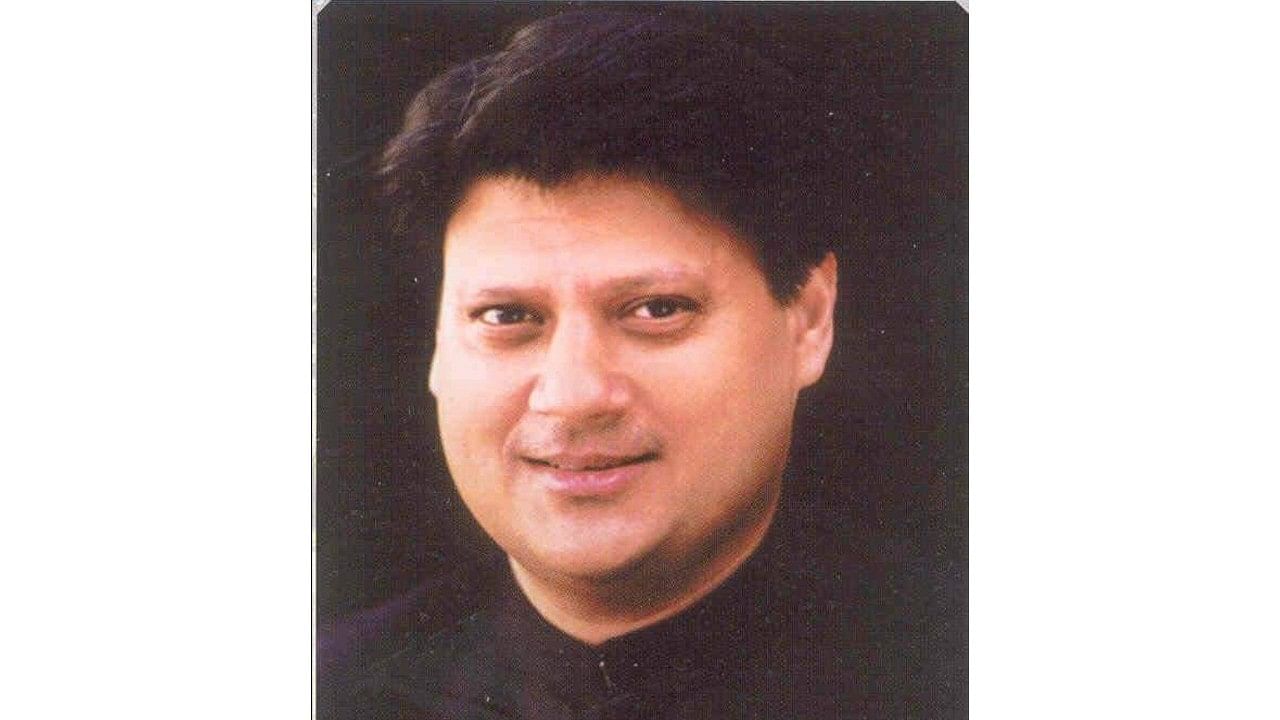
Madhavrao Scindia.
Credit: X/@chennithala
New Delhi: As poll fever is gripping the country, a new book provides many election-related nuggets of the past like Madhavrao Scindia's panache while canvassing against his mother, Kanshi Ram asking for a rupee from his voters as pledge and NT Rama Rao's histrionics in broken Hindi.
During the campaigning for the 1989 Lok Sabha elections, Madhavrao waged a battle to prevent the Guna seat from going to his mother - senior BJP leader and matriarch of the Gwalior royal family Vijayaraje Scindia.
Similarly, the target of Vijayaraje's broadside was not Rajiv Gandhi or the Congress candidate pitted against her, but her son Madhavrao, the Congress heavyweight defending his parliamentary seat in adjacent Gwalior, says writer-journalist Bhaskar Roy in his political memoir 'Fifty Year Road'.
"Ask your Maharaja why things have not happened. Where's development? If someone throws bricks at us, we will retaliate with stones," the Rajmata would keep blasting away.
"The widow of Maharaja Jivajirao Scindia - the last feudatory ruler of the princely state of Gwalior -Vijayaraje in her younger days, as old photographs would testify, was an elegant princess lending grace to the royal palace. Her visceral antagonism towards her only son was indeed intriguing," writes Roy.
"It could not be explained by their political differences alone. Many said she had been deeply hurt by her son's decision to switch over to Congress at the beginning of his political career. She had been grooming him as a future leader of the Jan Sangh, the previous incarnation of the BJP. The rift, those privy to palace affairs said, had been caused by the tussle over managing the royal family's enormous assets. She had been stung, she said, by her son's attempt to get her defeated in the election," the book says.
Madhavrao, however, thought his mother played into the hands of the BJP which was 'simply misusing her position'.
Roy also writes also how the then Andhra Pradesh Chief Minister N T Rama Rao was a tough challenger to Rajiv Gandhi as he tried to unite all anti-Congress forces.
At one public meeting in Haryana, supporters of Devi Lal -- who went on to become India's deputy prime minister later -- had spread the word about 'Tau's friend from down south' campaigning for them, in a reference to NTR.
However, NTR was not comfortable either in Hindi or English, Roy says.
"At one point, NTR addressed a gathering in a Hindi the farmers could hardly follow. One or two phrases, however, stayed with them. 'Congress ko ukhar phaenko,' he roared, with filmy histrionics," the book says.
Roy then goes on to mention Kanshi Ram's electoral foray in the high-profile parliamentary byelection from Allahabad in 1988.
Pitted against VP Singh and Sunil Shastri of Congress, Kanshi Ram polled an impressive 72,000 votes but managed to secure only the third position. Singh won that contest.
"Cash and liquor flow to garner votes for the big political parties. In Allahabad, I asked every voter to give me a one-rupee note to pledge their support to me. One Vote One Note - I gave that slogan," the book quotes Kanshi Ram as saying.
In the book, published by Jaico, Roy looks at half a century in India's life from the mid-60s onward.
"Fifty Year Road", he says, is about a series of upheavals that had milestoned India's contemporary history and appeared like a panorama before the author.
He talks about the Naxalbari uprising, 1971 Bangladesh Liberation War, George Fernandes' historic rail strike, the Emergency, Operation Bluestar, Indira Gandhi's assassination, Rajiv Gandhi's push for technology, his ghastly killing by the LTTE terrorists, the rise of the Hindu right, the Babri Masjid demolition, Sonia Gandhi and Manmohan Singh's stewardship of the UPA, and Narendra Modi's ascent to power.
Besides Rajiv Gandhi, Madhavrao Scindia, NTR and V P Singh, among the other personalities portrayed in the book are: Atal Bihari Vajpayee, Jyoti Basu, Siddhartha Shankar Ray, Charu Majumdar, Manmohan Singh, L K Advani, Sonia Gandhi, Amitabh Bachchan, and Narendra Modi.
On Friday, a 'critical conversation' around the book was held at the India International Centre here in which former BSF DG Prakash Singh, former diplomat Navtej Sarna, Jamia Millia Islamia professor Anuradha Ghosh and the author participated.
Singh recalled that when the Naxalbari uprising flared up in the late 1960s, Intelligence Bureau bosses asked him to study the problem critically.
"When I first met (the principal Naxalite ideologue) Charu Majumdar in the Lalbazar (Kolkata Police headquarters) lock-up, my first reaction was how such a 'dubla-patla' (lean and thin) man could trigger political turmoil in a large part of the country," he said.
He said the portrayal of Naxalite insurgency in the book was 'authentic and an accurate reflection' of the ground reality.
Sarna agreed with Roy that the large-scale anti-Sikh violence that had erupted in the wake of Indira Gandhi's assassination, should be called a pogrom and not a 'riot'.
According to Ghosh, the book stood out because of its insights into the political world. She pointed out that little anecdotes traced out with the writer's observant eye had added a new layer of meaning to the book.